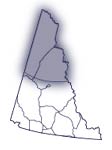Far North
The far northern region of the Yukon is an area that dwarfs all man-made scales. Imagine a landscape of epics. A vast open tundra, sculpted into rolling hills and mountains with a sweeping horizon and an immense sky. It's stark but far from sterile. The intensity of a tundra autumn will make you believe you've never seen colors before. The land becomes a siren signaling the beginning of winter.
In spring, the gain in daylight is so rapid that the earth transforms itself overnight. Rivers and ocean crash and boom at break-up, sending massive icebergs afloat. The sky is filled with the cries of flocks of swans, cranes, ducks and geese.
Herschel Island
A land of extremes, from pack ice to meadows of delicate tundra flowers, on the northern Yukon coastline.
A land of extremes, from pack ice to meadows of delicate tundra flowers, on the northern Yukon coastline.
Herschel Island
Located east of the mouth of the Firth is Herschel Island Territorial Park, a place where pack ice meets the tundra beaches. Herschel was a traditional hunting camp of the Inuvialuit people, a port for Russian whalers and a post for the North West Mounted Police.
The Tombstone Mountains
Dramatic, captivating, unique and inspiring are all that can be used to describe this area.
Dramatic, captivating, unique and inspiring are all that can be used to describe this area.
Dempster Highway
Cutting through this huge area is the Dempster Highway. At kilometre 371 (231 mi), approximately halfway, is the Eagle Plains Hotel, an oasis in the tundra with rooms, dining facilities and a large lounge where you can meet all sorts of people. The Porcupine Caribou Herd (numbering close to 200,000 animals) crosses the Dempster Highway twice a year on its way to and from the calving grounds on the Arctic Slope.The mountain scenery of the Dempster is without comparison: the Tombstone Mountains are stone needles, the Ogilvies are weathered into spiny rock fortresses, and the graceful organic curves of the Richardson Mountains were once on the primeval coastline of North America. Ivvavik National Park is a wilderness area far from any roads, best known for the Firth, an exclusive rafting river.
Old Crow
A splendid convergence of the past and the present coupled with convenience and accessibility.
A splendid convergence of the past and the present coupled with convenience and accessibility.
Old Crow
The Vuntut Gwichin First Nations People of Old Crow live a hundred miles from the nearest road, far above the Arctic Circle on the banks of the Porcupine River.The people of Old Crow are an incredible mix of the traditional and the cosmopolitan. At peace and at home with the conveniences of the modern world, the Gwichin have also managed to preserve their traditional lifestyle of hunting caribou in the spring and fall and trapping muskrat in the Old Crow Flats. North of Old Crow, ancient caribou fences can still be found - evidence of the prehistoric ancestors of the Gwichin people.


